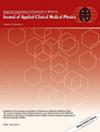RTPhy-ChatBot: A RAG-Based intelligent assistant for radiotherapy physics using LLaMA3 and AAPM reports
Abstract
Background
Medical physics plays a crucial role in radiotherapy, with ongoing technological advancements aimed at improving treatment outcomes. However, the rapid pace of innovation presents challenges for medical physicists, who must continuously acquire and integrate complex information for effective decision-making and communication.
Purpose
To support efficient knowledge acquisition, we developed RTPhy-ChatBot, an intelligent assistant tailored to radiotherapy physics. The objective was to create a reliable and precise tool to assist medical physicists in their daily work.
Methods
The knowledge base for RTPhy-ChatBot was constructed from publications by the American Association of Physicists in Medicine (AAPM), which were converted into markdown format, segmented, and embedded using the bge-base-en-v1.5 model. RTPhy-ChatBot employed the Meta-LLaMA3-8B-Instruct model for response generation. We compared its performance with several commercial large language models (LLMs) across 20 template questions and evaluated the impact of zero-shot chain-of-thought (CoT) reasoning. In addition to expert scoring by senior medical physicists, we conducted Rouge score analysis against synthesized reference answers.
Results
RTPhy-ChatBot demonstrated strong performance in answering radiotherapy physics questions. Across 20 questions, it achieved an average score of 4.0 ± 0.9, compared to 3.9 ± 1.1 for Gemini-2.0-Flash, 4.0 ± 1.4 for GPT-4o, and 3.8 ± 1.2 for Moonshot-v1. It excelled in questions involving specific quality assurance standards. Rouge analysis yielded scores of 0.5127 (Rouge-1), 0.2119 (Rouge-2), and 0.2748 (Rouge-L), closely matching commercial LLMs.
Conclusions
RTPhy-ChatBot proved to be an effective intelligent assistant for radiotherapy physics, delivering accurate, referenced responses grounded in AAPM publications. Despite lacking online access, it matched or exceeded the performance of commercial LLMs in domain-specific tasks. This pilot study highlights the potential of domain-specific assistants in supporting clinical workflows.


 求助内容:
求助内容: 应助结果提醒方式:
应助结果提醒方式:


